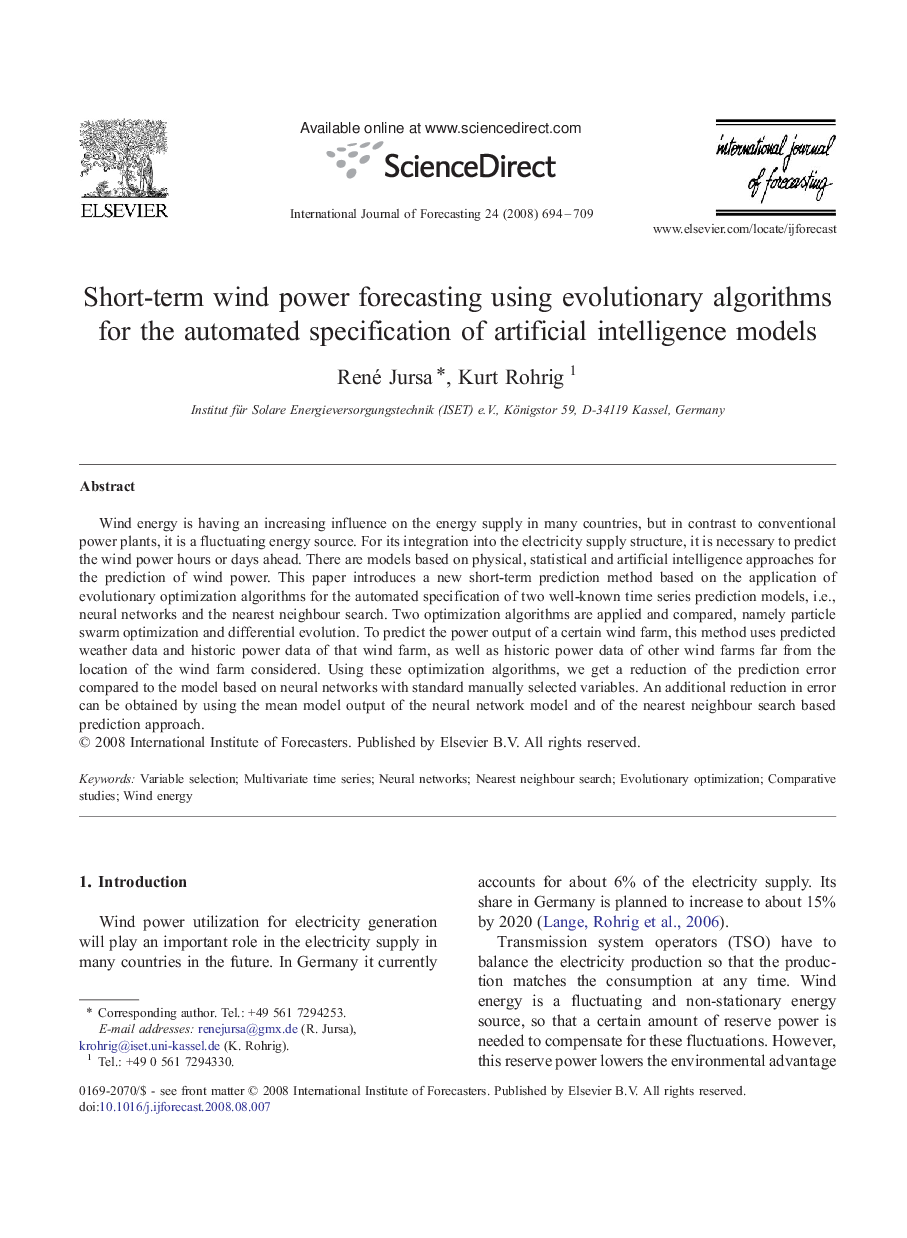| Article ID | Journal | Published Year | Pages | File Type |
|---|---|---|---|---|
| 997751 | International Journal of Forecasting | 2008 | 16 Pages |
Wind energy is having an increasing influence on the energy supply in many countries, but in contrast to conventional power plants, it is a fluctuating energy source. For its integration into the electricity supply structure, it is necessary to predict the wind power hours or days ahead. There are models based on physical, statistical and artificial intelligence approaches for the prediction of wind power. This paper introduces a new short-term prediction method based on the application of evolutionary optimization algorithms for the automated specification of two well-known time series prediction models, i.e., neural networks and the nearest neighbour search. Two optimization algorithms are applied and compared, namely particle swarm optimization and differential evolution. To predict the power output of a certain wind farm, this method uses predicted weather data and historic power data of that wind farm, as well as historic power data of other wind farms far from the location of the wind farm considered. Using these optimization algorithms, we get a reduction of the prediction error compared to the model based on neural networks with standard manually selected variables. An additional reduction in error can be obtained by using the mean model output of the neural network model and of the nearest neighbour search based prediction approach.
